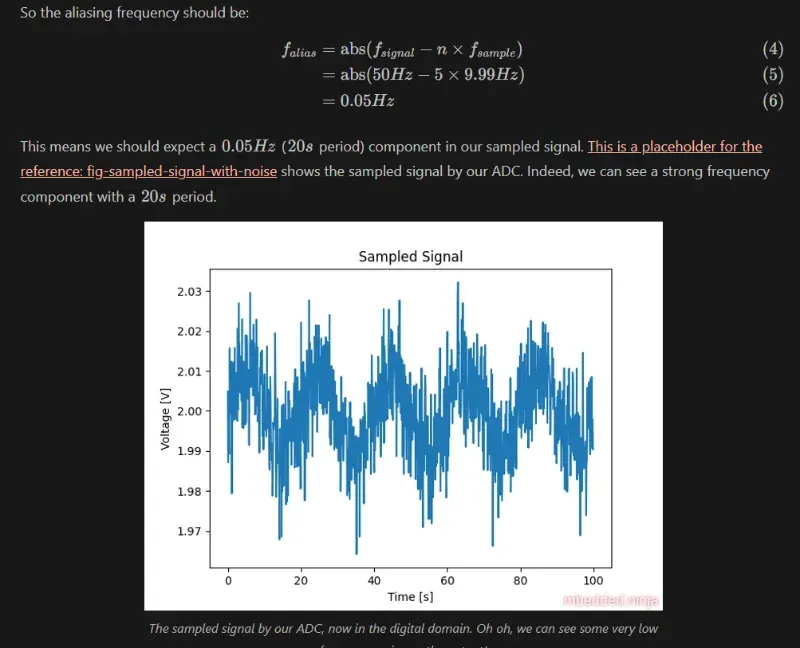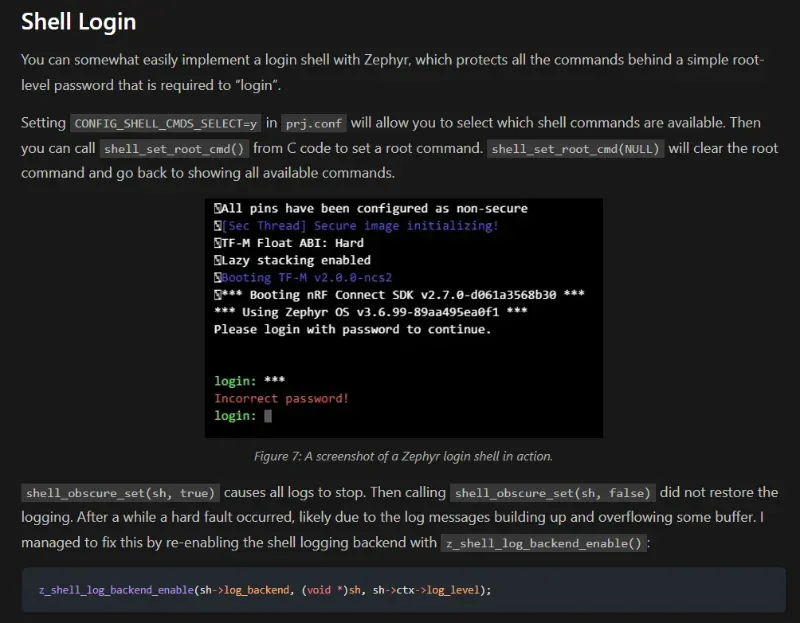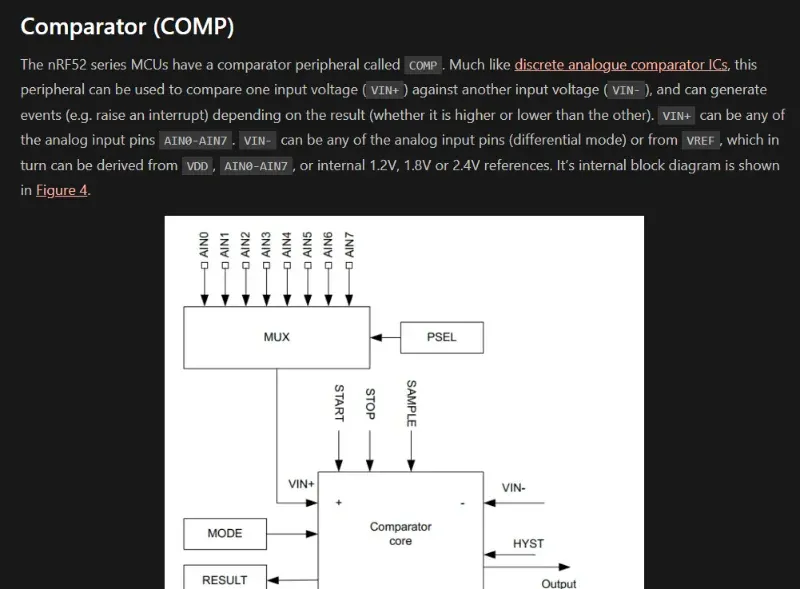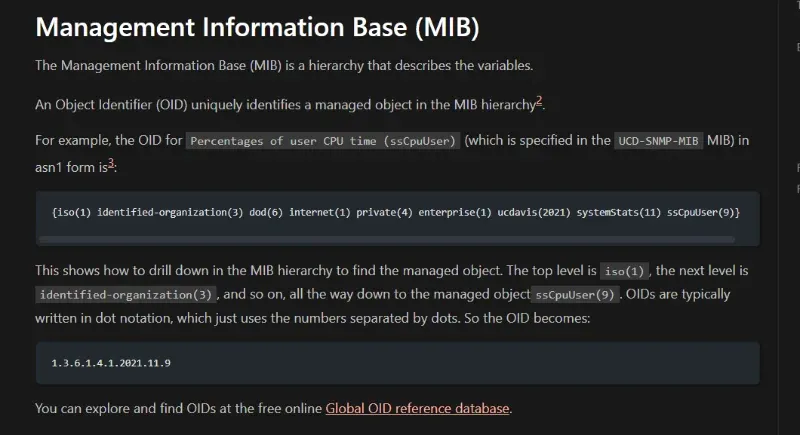Welcome to blog.mbedded.ninja!
Use the links below or the sidebar (wide screens)/menu (mobile) to navigate through the different sections of the site.
Categories














Recent Updates
June 2025 Updates
Removed Umami Analytics
The Umami analytics server was costing me about US$6 each month, so I decided to remove it.
May 2025 Updates
Added Info on Azure IoT Hub
Added info on Azure IoT Hub.
Added Info on C++ Callbacks
I finished polishing off the updates to the C++ Callbacks page.
Added Info on the C++ One Definition Rule (ODR)
Added info on the C++ One Definition Rule (ODR) to the site.
Added Info on C++ Namespaces
Added info on C++ Namespaces to the site.
Added Info on C++ std::span
Added info on C++ std::span to the site.
Added Info on The Time Constant of the EMA Filter
Added equations, info and graphs on the time constant of the EMA filter to the site.
New Page on Power Monitor ICs
Added a new page on Power Monitor ICs to the site.
Removing Mains Noise from ADC Measurements
Added a new page on Removing Mains Noise from ADC Measurements to the site.
Added a New Page on the Dart Language and Flutter
Added a new page on the Dart language and Flutter to the site.
Added a New Page on Creating Python Executables with PyInstaller
Added a new page on Creating Python Executables with PyInstaller to the site.
Added Info on Coin Cell Battery Holders
Added info on coin cell battery holders to the site.
Added Info on nrfutil
Added info on nrfutil to the site.
Added Info on Linear Feedback Shift Registers (LFSRs)
Added info on Linear Feedback Shift Registers (LFSRs) to the site.
Added Info on Contactless CAN Bus Sniffers
Added info on Contactless CAN Bus Sniffers to the site.
April 2025 Updates
Added Info on InfluxDB
Added info on InfluxDB.
Added Info on Azure Functions
Added info on Azure Functions.
Added Info on JST ACH Connectors
Added info on JST ACH connectors.
Added Info on the nRF52 Near Field Communication Tag (NFCT) Peripheral
Added info on the nRF52 Near Field Communication Tag (NFCT) Peripheral.
Moved Wire-to-Board Connector Info Onto It’s Own Page
Moved the wire-to-board connector info from the Connectors page onto it’s own page Wire-to-Board (WTB) Connectors.
Added Info on Near Field Communication (NFC)
Added info on Near Field Communication (NFC).
Added Info on Pandas Saving to Pickle, Feather, and Parquet File Formats
Added info on Pandas saving to Pickle, Feather, and Parquet file formats.
Added Info on Flow Sensor Calibration
Added info on flow sensor calibration.
Moved the Antenna Design Page
Moved the antenna design page from under Electronics->Circuit Design to Under Electronics->Components and renamed it to from “Antenna Design” to “Antennas”.
Added Info on the Zephyr Watchdog API
Added info on Zephyr Watchdog API.
Added Info on x86-64 Assembly
Added info on x86-64 Assembly.
Corrected Info on C++ Magic Statics
Arthur O’Dwyer kindly pointed out via email that some of the info on C++ magic statics was incorrect. I’ve updated the page to correct this.
Added Info on Google Benchmark
Added info on Google Benchmark.
Added Info on C++ Callbacks
I updated the C++ Callbacks page, going into more detail on the different types of callbacks and a section benchmarking the performance of the different types of callbacks.
Added Info on Creating a Zephyr Login Shell
Added info on creating a Zephyr login shell.
March 2025 Updates
Added Wurth SKEDD IDC REDFIT Connectors
Added info on Wurth SKEDD IDC REDFIT Connectors.
Added Info on nRF52 GPIOs
Added info on nRF52 GPIOs.
Added Info on the nRF52 Comparator
Added info on the nRF52 Comparator.
February 2025 Updates
Added Info on nRF54L Series SoCs
Added info on the Nordic Semiconductor nRF54L Series SoCs including internal architecture block diagram, memory specifications, package types and tamper detection peripherals.
Added Info on the nRF9151 SoCs
Added info on the Nordic Semiconductor nRF9151 SoCs including a “Getting Started” guide.
Added Info on Test Jigs
Added info on test jigs including a section on pogo pins.
Added Info on Microsoft SQL Server
Added info on Microsoft SQL Server.
Added Info on Flow Sensors
Added info on flow sensors including a section on the YF-Bx family of flow sensors.
Added Info on Atomic Variables in Zephyr
Added info on atomic variables in Zephyr.
Added Info on Logging in Python
Added info on logging in Python.
January 2025 Updates
Added Info on DIP Switches
Added info on DIP switches including uses, photos and rotary DIP switches.
Added Info on Contributing to Zephyr
Added info on how to contribute to the Zephyr Project.
Added Info on LED Chemistries and LED History
Added info on LED chemistries.
Added Info on Reducing the Size of a GitLab Repository
Added info on how to reduce the size of a GitLab repository.
Added Info on Using Different SSH Keys for Different Repos
Added info on how to use different SSH keys for different Git repositories.
Added Info on Silencing Spurious Duplicate Unit Address Warnings
Added info on how to silence spurious duplicate unit address warnings.
Happy New Year 2025
2024 saw 505k (505,000) page views for blog.mbedded.ninja! This was up from 436k last year, an increase of 69k or 16%. This is a placeholder for the reference: fig-stats-graphs shows the page views and other key stats per year.
NinjaTerm went through 11 releases from v4.12.1 to v4.19.0. Some significant features were added, after it got turned into a PWA just before the start of 2024. It has 75 stars on GitHub and had 3.1k page views (as reported by Google Analytics).
NinjaCalc went through 2 releases from v3.5.2 to v3.5.4. These were minor releases which just fixed a broken URL and added the Umami analytics functionality. It has 30 stars on GitHub and had 52k page views (as reported by Google Analytics).
CppLinuxSerial went through 1 release from v2.8.1 to v2.8.2. This added changes to the CMake build system to allow add_subdirectory() to work correctly. It has 387 stars on GitHub.
Blog page views were based on a combination of Umami and Google Analytics. Umami was used were data was available due to it not being blocked by ad blockers, otherwise Google Analytics was used. Google Analytics values were adjusted to “Umami” values based on the average difference between the two. The average difference was calculated over all months that both were available. This is a placeholder for the reference: tbl-2024-page-views shows the page views for each month from the different analytics services. These were used to create This is a placeholder for the reference: fig-stats-graphs.
| Month | Umami | Google Analytics | Umami (interpolated) |
|---|---|---|---|
| Jan | n/a | 41k | 54k |
| Feb | n/a | 42k | 55k |
| Mar | n/a | 33k | 43k |
| Apr | 40k | 30k | 40k |
| May | 40k | 30k | 40k |
| Jun | 36k | 32k | 36k |
| Jul | 39k | 33k | 39k |
| Aug | n/a | 28k | 37k |
| Sep | n/a | 26k | 34k |
| Oct | 47k | 30k | 47k |
| Nov | 44k | 37k | 44k |
| Dec | 36k | 24k | 36k |
| Total | n/a | 386k | 505k |
For all months in which data was available for both, Umami reported 282k views, and Google Analytics reported 216k views. Umami is 31% higher than Google Analytics.
Most Popular Blog Pages
This is a placeholder for the reference: fig-engagement-pages-and-screens shows the top 10 most popular pages, ranked by number of page views.
Blog Acquisition
This is a placeholder for the reference: fig-traffic-acquisition shows the top 7 sources of acquisition traffic in 2024. As usual, most of the traffic was from organic search (e.g. Google search engine).
Blog Word, Page and Image Counts
At the end of 2024 the site had 704k words, up from 639k words last year (an increase of 65k). These words were spread over 1313 pages (up from 1221 pages last year), and included 3,222 images (an decrease of 1,296 from 4,518 images images last year). Even though many new images were added last year, the total dropped because I purged all of the redundant images that were still hanging around in the public/ directory from when the site was migrated away from Wordpress.
Achievements in 2024
- The blog was migrated from Hugo to Astro.js. I’m really happy with the change, as Astro.js component syntax is much clearer than Hugo’s, and Astro.js lets me use React components if needed (I use React on a number of other projects).
- I fully embraced the
.webpimage format (which has great compression size), and almost all new raster images are now in this format..svgis still used for vector images. - Site-wide search was added to the blog. This became easier to implement after the migration to Astro.js.
- Added a “cover image” feature to each page. Each page can now have a cover image assigned to it (a piece of metadata in the frontmatter). This cover image is used in the parent page’s “child pages” section to display beside the page description. It is also used for the social media preview image.
- Added figure, table and equation numbering support (I had this in Hugo, but lost it when migrating to Astro.js).
- NinjaTerm got heaps of new features added, after it got turned into a PWA just before the start of 2024.
Plans For The 2025 Year
- Add more content to the blog (as always!).
- Keep adding features to NinjaTerm.
- Make sure CppLinuxSerial can work with CMake’s
FetchContentfeature (it’s an easy way to include external dependencies).
2025
Child Pages
















December 2024 Updates
Add Relay Contact Forms Info
Added information about relay contact forms, e.g. Form A, Form B, Form C, Form D, and Form X.
Added a Page on Chip Carrier Packages
Added information about chip carrier packages, including PLCC, LCC, LCCC, and BCC.
Started a Page on Designing a HAL in C++
Added information about designing a HAL in C++.
Started a PCB Rework Guide
Started a page on PCB reworking.
Added Info on the MFF2 (DFN-8) Package Used For eSIMs
Added information about the MFF2 (DFN-8) package used for eSIMs.
November 2024 Updates
Added New Page On Creating Digital and Analogue Delays
Added a new page on creating digital and analogue delays. This includes delays using RC/Schmitt triggers, 555 timers, long pieces of wire, delay line ICs, bucket brigade delay ICs, and microcontrollers.
Added New Page on Bucket Brigade Devices
Added a new page on Bucket Brigade Devices.
Added Info on Zephyr’s nsi_exit()
Added more info on Zephyr’s native_sim board to the Zephyr page.
Added Info on Zephyr’s State Machine Framework
Added info on Zephyr’s State Machine Framework (SMF).
Added Info on Dry Relay Contacts
Added info on what is meant by “dry” contacts in the context of relays to the Mechanical Relays page.
Added New Pages on SOD-57 and SOD-64 Component Packages
Added new pages on the SOD-57 and SOD-64 component packages.
Updated the Object-Orientated C Page
Updated the Object-Orientated C page with info on polymorphism and testing.
October 2024 Updates
IEEE 2030 Smart Grid Interoperability Communication Protocol
Added information about the IEEE 2030.5 Smart Grid communication protocol.
Makefiles
Added information on changing directory and detecting the operating system in a Makefile.
Cellular
Added information on LPWAN (cellular comm. protocols designed for embedded devices/IoT), including LTE Cat M and LTE Cat NB (NB-IoT).
Simple Network Management Protocol (SNMP)
Added information on the Simple Network Management Protocol (SNMP), including network hierarchy, versions, and traps.
Running GitLab Pipelines Locally
Added information on how to run GitLab pipelines locally using the gitlab-ci-local tool.
Added a Astro.js Table Component
To support data-rich tables in .mdx files, I created a Table component.
The Table component allows you to pass in the data as a Javascript object, and it will automatically create the headers and rows from this.
Using Dev Containers for Firmware Development
Added information on how to use dev containers for firmware development.
Add Info on ESP32 and ESP-IDF
Added info on ESP32 SoCs and ESP-IDF.
Added Equation Referencing Support
When moving from MathJac to Katex (as part of the move from Hugo to astro.js), I lost the ability to reference equations from within text as Katex does not support the \label and \ref commands with automatically numbered equations.
To get around this, I add \htmlId{}{} markers in the Katex and implement the reset of the logic for equation referencing in the client-side IRefClientScript.js script (which already does the figure and table referencing).
Added Resistor Node Analysis Info
Added a convoluted resistor network example to show how to analyse the nodes in a resistor network to determine whether resistors are in series or parallel.
Added Info on Kirchhoff’s Circuit Laws
Added a new page on Kirchhoff’s Circuit Laws.
Added Info on Google Cloud
Added a new page on Google Cloud, including info on Firebase and the Firebase CLI.
Fixed Missing Square Root Symbols
I discovered this month that square root symbols were not rendering in any equations across the site. After much digging, I found at that this was because some Starlight CSS was messing with the svg used to render the square root symbol.
The offending CSS from Starlight was:
.sl-markdown-content :is(img, picture, video, canvas, svg, iframe):not(:where(.not-content *)) { display: block; max-width: 100%; height: auto;}Specifically, it is the height: auto; which selects svg. Katex uses an svg to draw the square root symbol in equations (many other parts of the equation are not svg, which is why you may not notice anything is amiss!). I added the following CSS to custom.css to fix this:
/**This CSS fixes issue where \sqrt{} was not being rendered in Katex, due to a Starlight Css svg height rule*/.katex-html svg { height: inherit;}Split the RF Info Into It’s Own Page
The RF connector info on the Connectors page was brought out onto it’s own child page. Info on reverse-thread SMA connectors was added.
September 2024 Updates
Split Battery Page
The Lithium Thionyl Chloride and Zinc-Air info have been split from the main Batteries page into their own pages. This was done to match the other battery chemistries.
Embedded Template Library (ETL)
Added info on the C++ Embedded Template Library (ETL).
nRF Connect for VS Code
Added info on nRF Connect for VS Code.
I2S Communication Protocol
Added info on the I2S Communication Protocol.
Cover Images
Added cover images to many pages, especially those in the Communication Protocols section.
Added Ability To Add Page Aliases
I added the ability for document pages to specify aliases. Aliases are great when you are moving pages around and the existing page is linked (and has a significant amount of traffic) from external sites. These aliases are added to each .mdx documents front matter like so:
---aliases: [/my-old-page/]authors: [gbmhunter]date: 2024-09-11lastUpdated: 2024-09-11tags: [my tag]title: My Pagetype: page---
This is my page!This field is specified in the content collection so it becomes available in the .data object when inside the getStaticPaths() function. To specify it in the collection’s schema, add the following to the src/content/config.ts file:
const pagesCollection = defineCollection({ type: 'content', schema: ({image}) => z.object({ aliases: z.array(z.string()).optional(), // Used to setup dynamic redirects. This is done in [...slug].astro authors: z.array(z.string()), date: z.date(), description: z.string().optional(), draft: z.boolean().default(false), image: image().optional(), lastUpdated: z.date(), tags: z.array(z.string()).optional(), title: z.string(), }),});Then, in the [...slug].astro file which contains the getStaticPaths() function which determines the routes for the site, I check if the page has aliases and if so, add them to the static paths array. Alias paths are passed a aliasTo prop which is used to redirect to the correct page:
---export async function getStaticPaths() { const combinedCollection = await getAllCollections(); const routablePages = getRoutablePages(combinedCollection); const sidebarData = getSidebarData(combinedCollection);
let staticPaths = []; for (let pageRoute of routablePages) {
//...
// Need to create additional paths if the page contains aliases in it's front matter const aliases = pageRoute.data.aliases; if (aliases) { for (let alias of aliases) { staticPaths.push({ params: { slug: alias }, props: { aliasTo: pageRoute.slug, // Nothing more is needed for the alias page frontmatter: undefined, render: undefined, sidebarData: undefined, }, }); } }
staticPaths.push({ params: { slug: pageRoute.slug }, props: { aliasTo: undefined, frontmatter: pageRoute.data, render: pageRoute.render, sidebarData: sidebarData, }, }); }
return staticPaths;}
const { aliasTo, frontmatter, render, sidebarData } = Astro.props;
// Check if this page is an alias, and if so, redirect before attempting to render pageif (aliasTo) { return Astro.redirect(`/${aliasTo}/`);}
---Created a Programming > Design Section
I decided that the Programming > General section was somewhat mis-labeled (what is “General” mean anyway?). Some of the pages under this section seemed to fit a “Design” section, so I created a new section called Programming > Design. As a start, the pages on state machines have been moved across.
Added Info on GNU Linker Scripts
Added info on GNU Linker Scripts.
Added New Optocoupler Schematic Symbols
Added new schematic symbols for bidirectional phototransistor optocouplers.
Moved the EEPROM Info to it’s Own Page
The EEPROM info has been moved from the Memory page to it’s own EEPROM page.
Added Code To Convert From Year/Month/Day To Day Of The Week
Added code to calculate the day of the week from the year, month and day in the Real Time Clock (RTC) ICs page.
Google Analytics vs. Umami
Umami has now been running long enough to do a useful comparison with Google Analytics. Below are the results for this blog, NinjaCalc and NinjaTerm. The time periods are slightly different for each site (due to different dates on which the data was valid).
Blog
Time range: 1st April 2024 - 30th June 2024 (3 months)
| Metric | Google Analytics | Umami |
|---|---|---|
| Views | 92k | 116k |
| Visitors (Users) | 45k | 66.9k |
NinjaCalc
Time range: 1st May 2024 - 31st August 2024 (4 months)
| Metric | Google Analytics | Umami |
|---|---|---|
| Views | 13k | 4.32k |
| Visitors (Users) | 1.1k | 1.57k |
NinjaTerm
Time range: 1st April 2024 - 31st August 2024 (5 months)
| Metric | Google Analytics | Umami |
|---|---|---|
| Views | 1.5k | 3.21k |
| Visitors (Users) | 590 | 1.18k |
Added Info on the Memfault CLI
Added info on the Memfault CLI.
Updated Menu Styling
The default Starlight menu styling provided different font size and weights to sections and links. Given the arbitrarily nested nature of this site’s menu hierarchy, this did not look that great. I decided to make all the menu items look the same. To this I add to add some more selective CSS that would override the default Starlight styling.
Info on Phototransistors
Added info on phototransistors, including the schematic symbol and a basic circuit.
Added Figure/Table Numbering and References
I wanted to be able to refer to figures and tables within page text using syntax like “Figure 1”, “Table 2” e.t.c, rather than “see the figure below”. Unfortunately this feature is not supported by .mdx out-of-the-box.
I figured I had two options to implement this:
- Write a remark/rehype plugin that runs during the build process.
- Write a Typescript script that runs on the client’s browser.
Even though the remark/rehype plug-in would of have been the best for load speeds, I decided to go with the Typescript route as it would be easier to implement (I have no experience with remark/rehype).
I decided to call this feature “Item References” to distinguish them from the references already used to cite sources. I made a <IRef /> Astro component that can be used to reference items. This allows page authors to write this:
<IRef iref="my-figure" /> shows my picture I made. Yay!
<Image iref="my-figure" src={import('./_assets/my-figure.webp')}>A picture!</Image>The user will see <IRef ... /> replaced with the text Figure 1, and the figure will have Figure 1 prefixed to the caption text.
So far only images and tables can be referenced, but I plan on adding support for equations and code snippets soon. The entire client-side script can be shown below.
The client-side script source code
/** * This script is run in the user's browser and adds "Item Reference" (IRef) functionality. * Item references are used to link to specific elements in the page, such as figures, tables, equations, e.t.c. They * are different from "references" which are used to cite sources. * It prefixes figure captions with "Figure 1", "Figure 2", etc. * It also looks for <IRef /> components and replaces the text and link to the corresponding item. */
/** * Represents a reference destination in the page. */class RefDestination { type: string; index: number; ref_name: string; constructor(type: string, index: number, ref_name: string) { this.type = type; this.index = index; this.ref_name = ref_name; }}
function create_ref_links() { let found_iref_destinations: { [key: string]: RefDestination } = {};
const markdownContentDiv = document.querySelector('.sl-markdown-content'); if (!markdownContentDiv) { console.error('markdownContentDiv not found'); return; }
// Find all figures. // 1) Prefix figcaptions with "Figure X: " // 2) Add figure to found_ref_destinations if ref present const figures = markdownContentDiv.querySelectorAll('.figure'); console.log('figures', figures); figures.forEach((figure, index) => { const figcaption = figure.querySelector('figcaption'); if (figcaption) { figcaption.textContent = `Figure ${index + 1}: ` + figcaption.textContent; } // If figure has an id, add it to the found_ref_destinations array const iref = figure.getAttribute('data-iref'); if (iref) { found_iref_destinations[iref] = new RefDestination('figure', index, `Figure ${index + 1}`); } });
// Find all tables under the markdown content div // 1) Prefix table captions with "Table X: " // 2) Add table to found_ref_destinations if iref present const tables = markdownContentDiv.querySelectorAll('table'); console.log('tables', tables); tables.forEach((table, index) => { console.log('table', table); const tableCaption = table.querySelector('caption'); if (tableCaption) { tableCaption.textContent = `Table ${index + 1}: ` + tableCaption.textContent; } // If table has an iref, add it to the found_ref_destinations array const iref = table.getAttribute('data-iref'); if (iref) { found_iref_destinations[iref] = new RefDestination('table', index, `Table ${index + 1}`); // Add id to table so we can link to it table.id = iref; } });
console.log('found_ref_destinations', found_iref_destinations);
// Find all ref-source elements and link them to the corresponding item ref in the page const refSources = document.querySelectorAll('.ref-source'); console.log('refSources', refSources); refSources.forEach((refSource) => { const ref = refSource.getAttribute('data-iref'); console.log('ref', ref); // Check if ref is in found_ref_destinations if (!ref) { console.error('ref not found in refSource', refSource); return; } if (found_iref_destinations[ref]) { refSource.textContent = `${found_iref_destinations[ref].ref_name}`; } else { // This is an error, it means there is an <IRef /> component in the markdown // that does not have a corresponding figure, table, etc. console.error('ref not found in found_ref_destinations', ref); } });}
// Create ref links on page load (e.g. navigating to the site from a different site)create_ref_links()
// Re-link figures after swapping pages (i.e. navigating between pages on this site)// We need to do this because page transitions do not reload the entire page and// trigger this script file to be reparsed.// Using after-swap is better than page-load because it is before the page is rendereddocument.addEventListener("astro:after-swap", create_ref_links)

























































